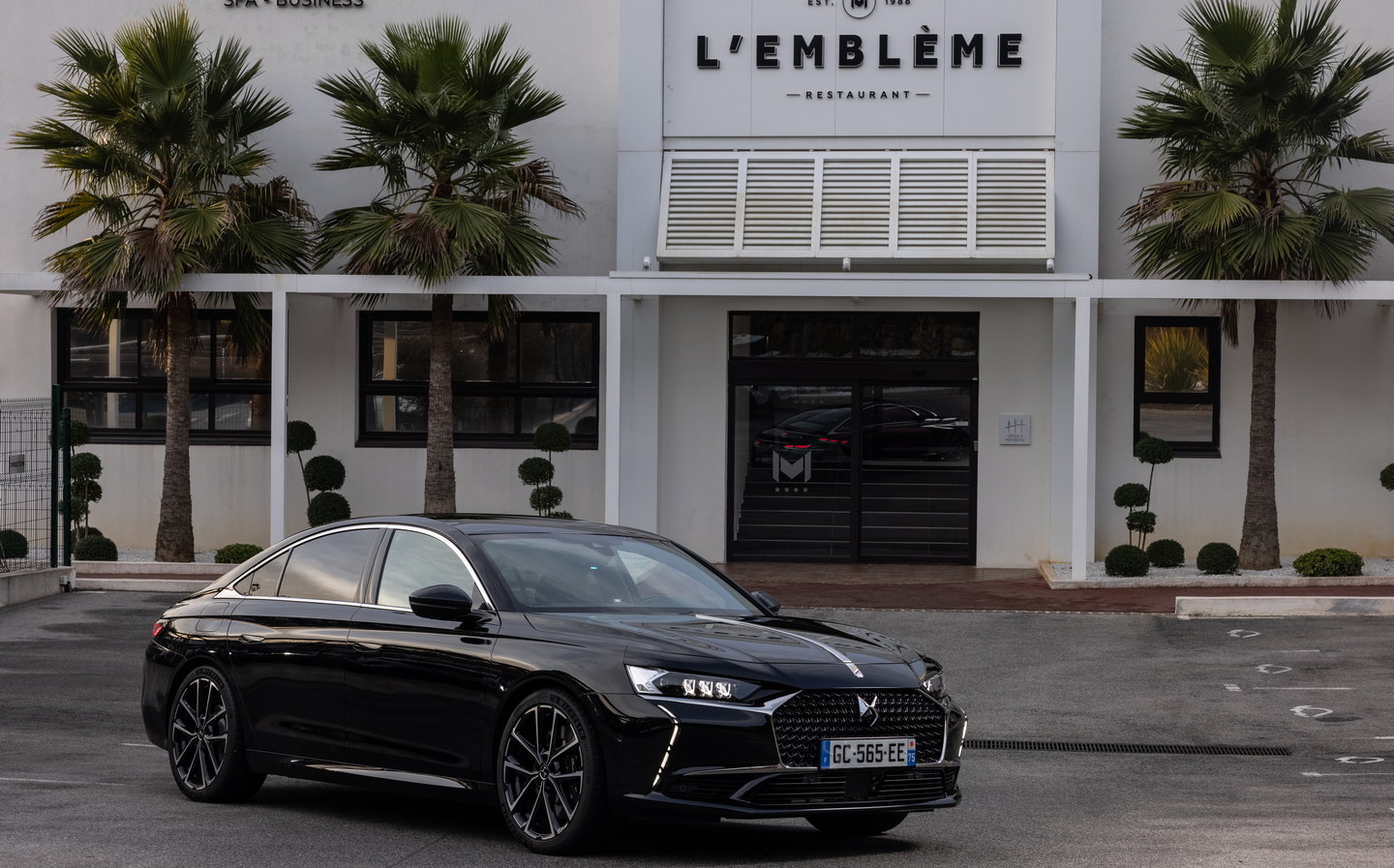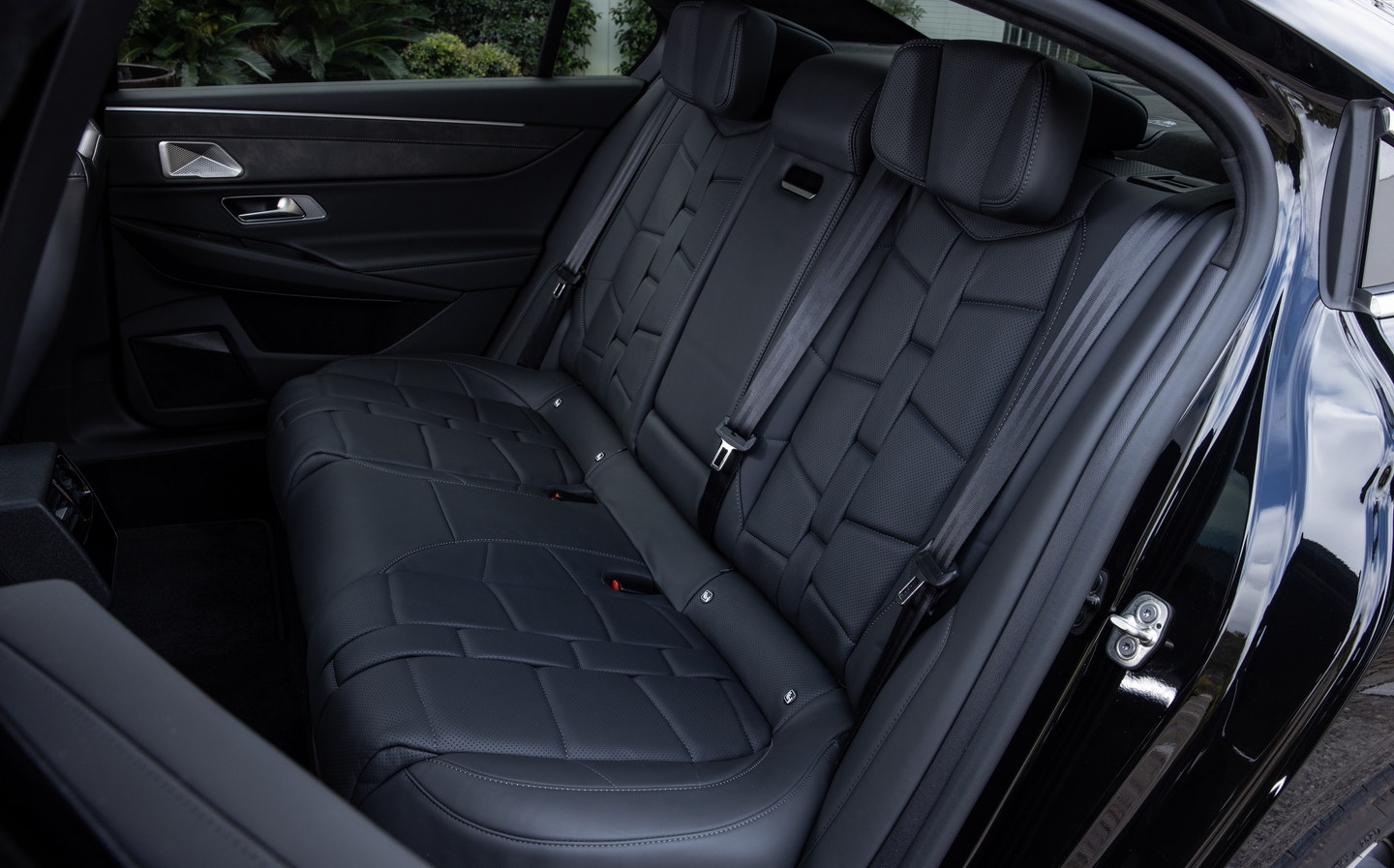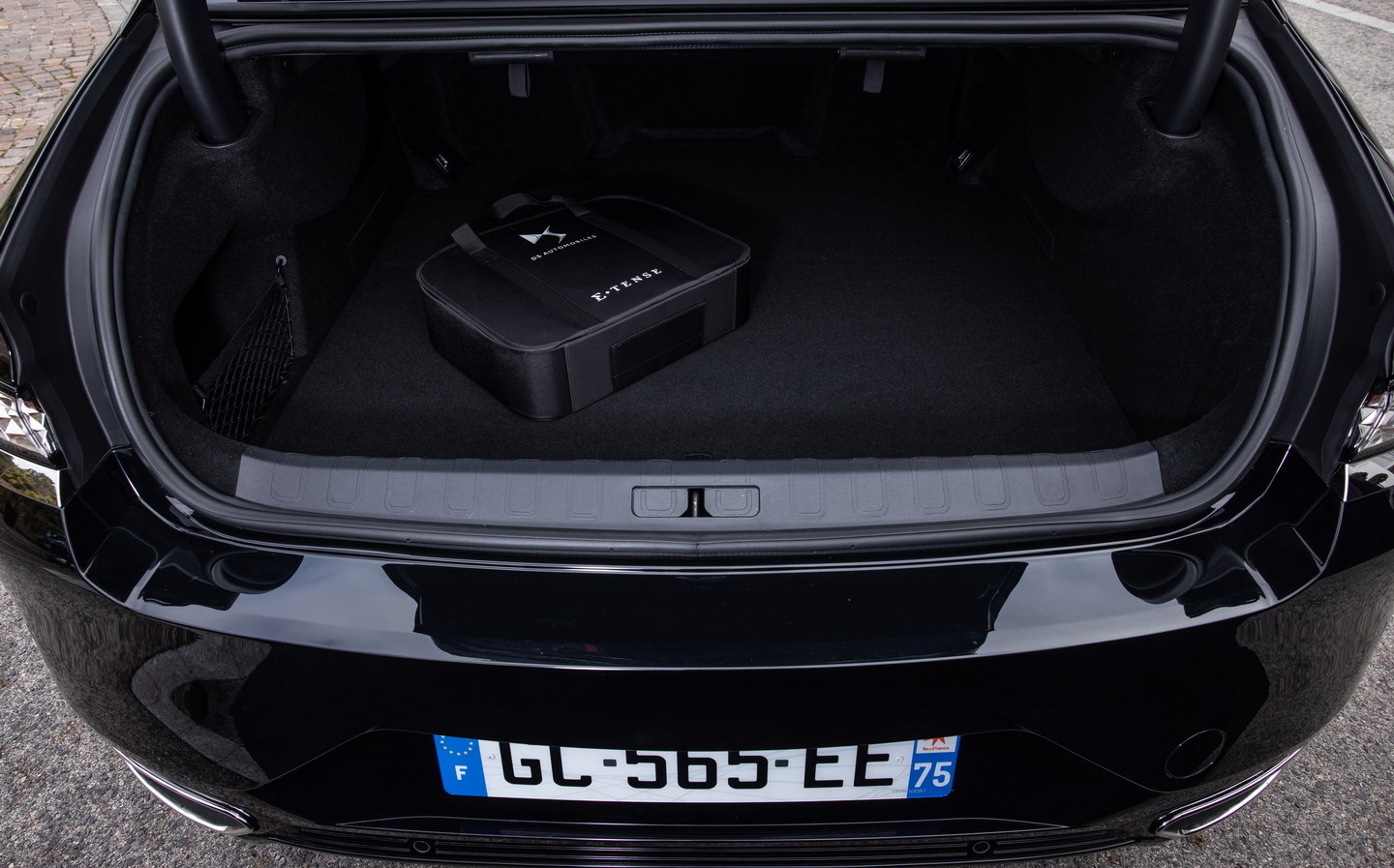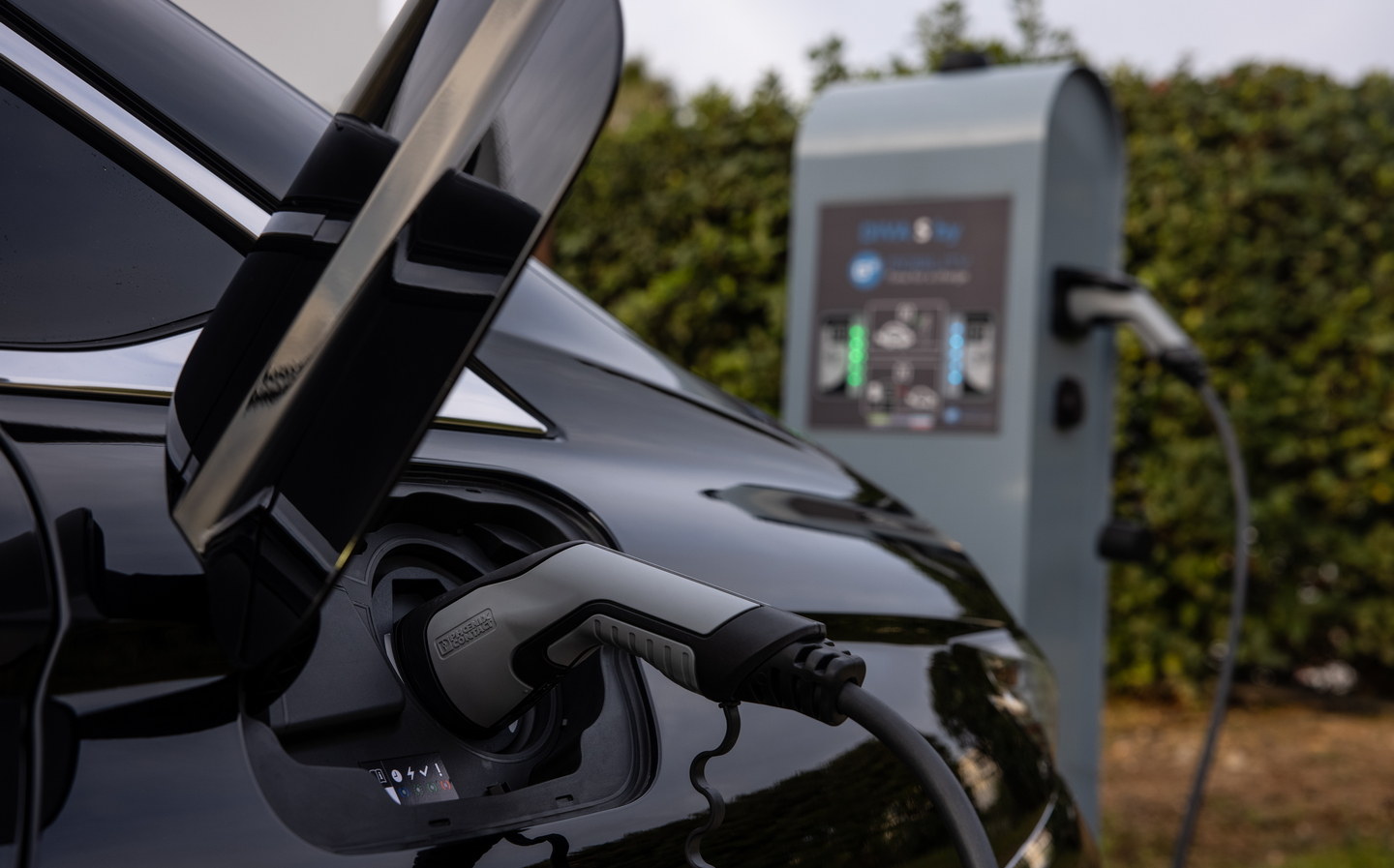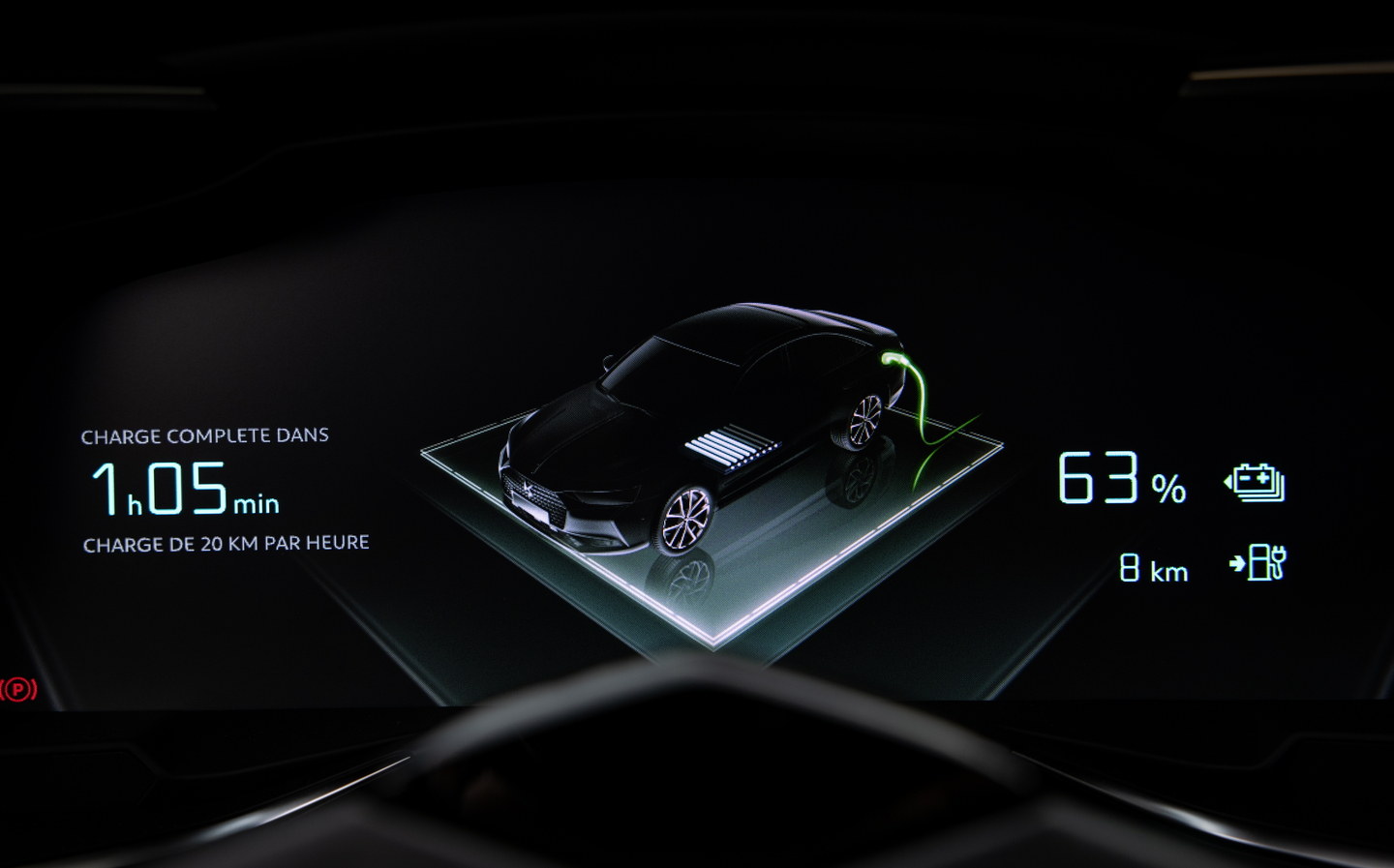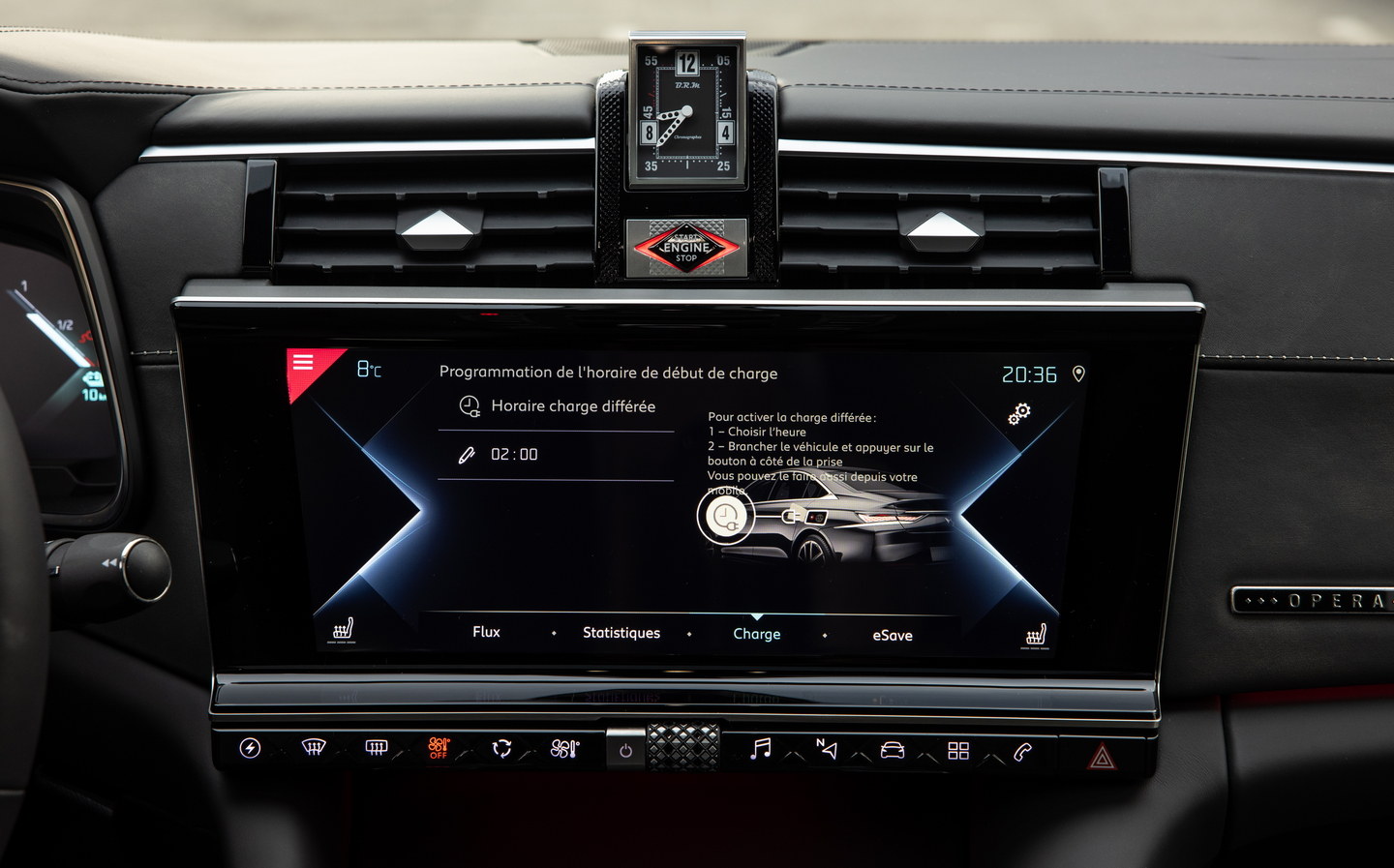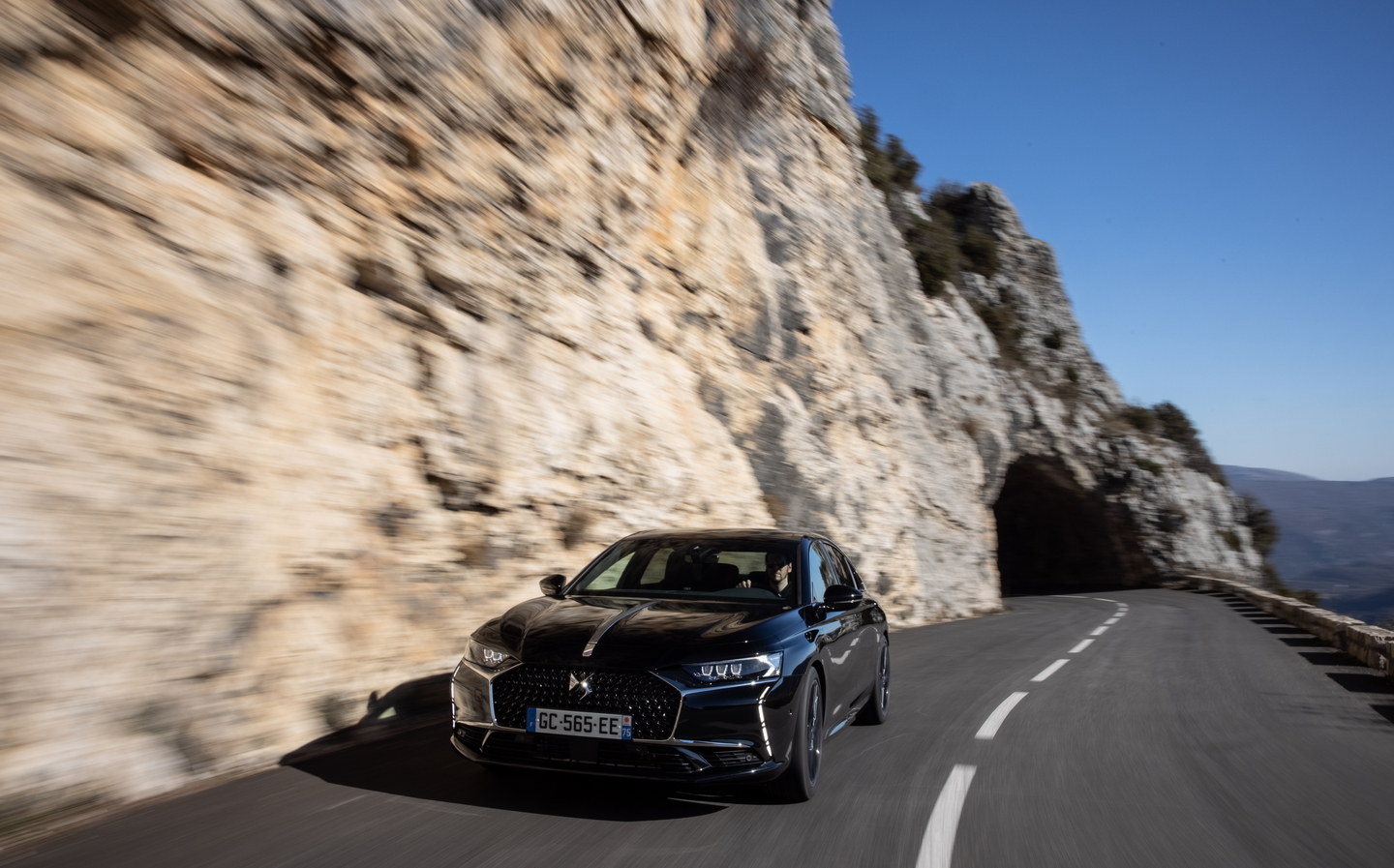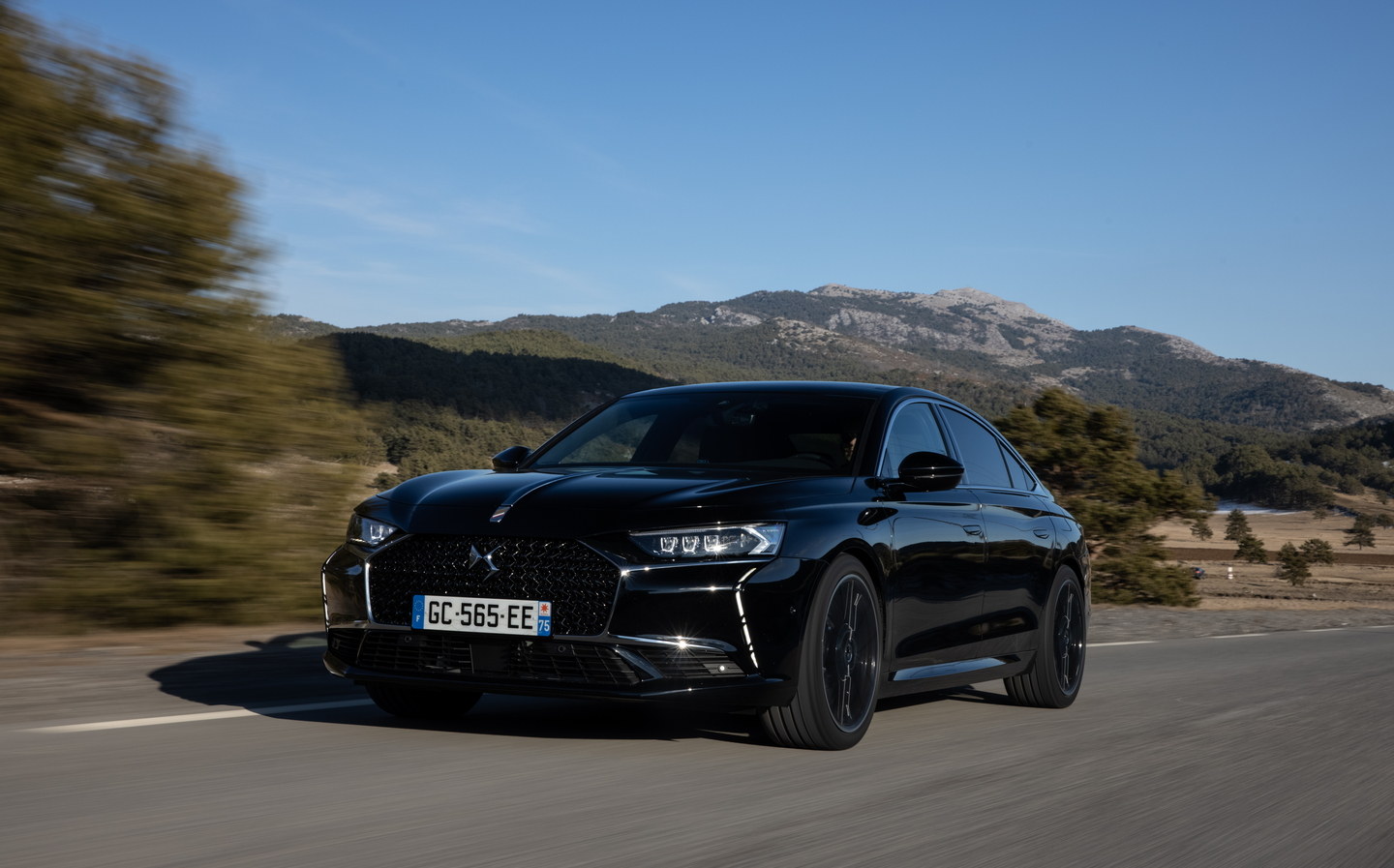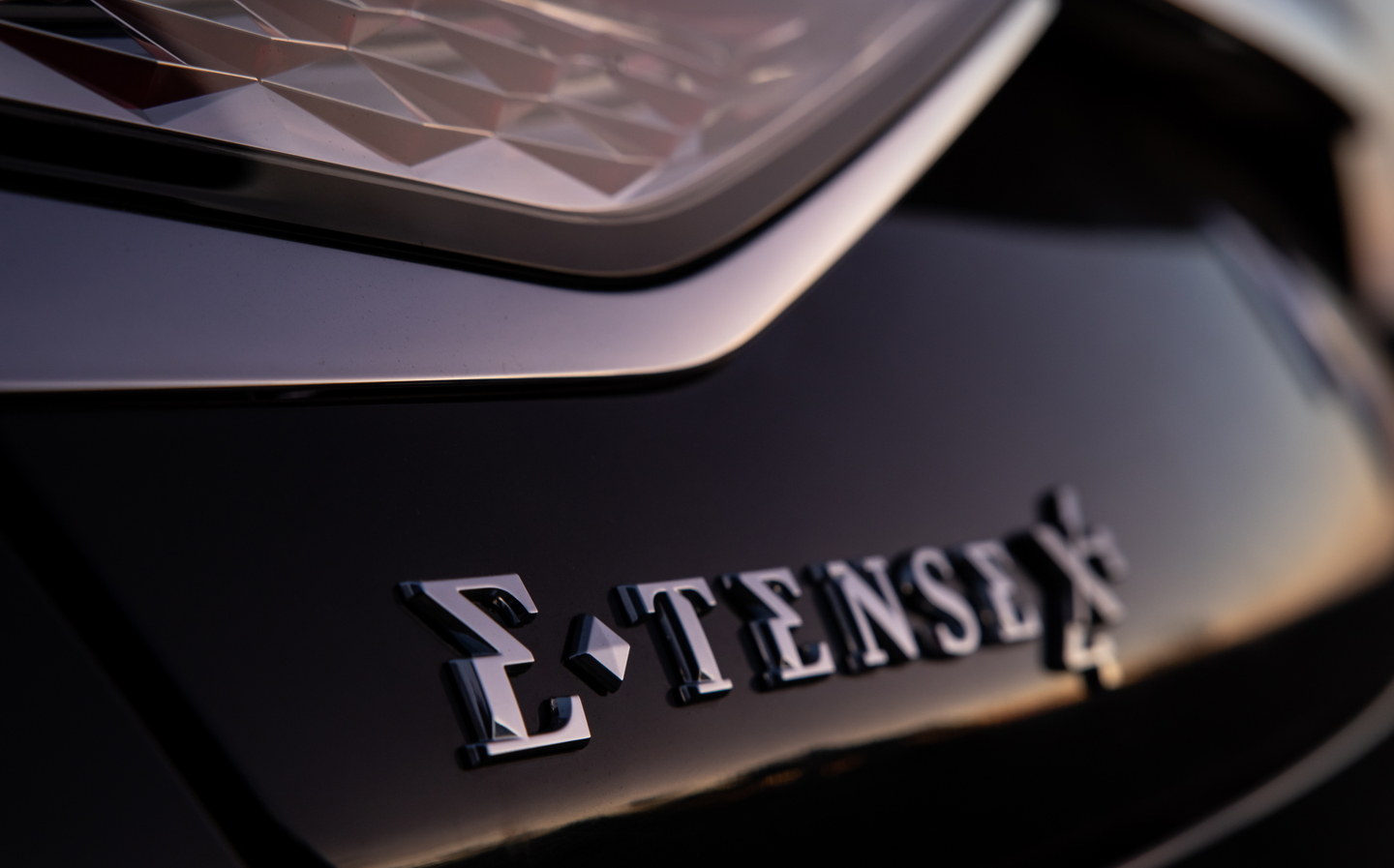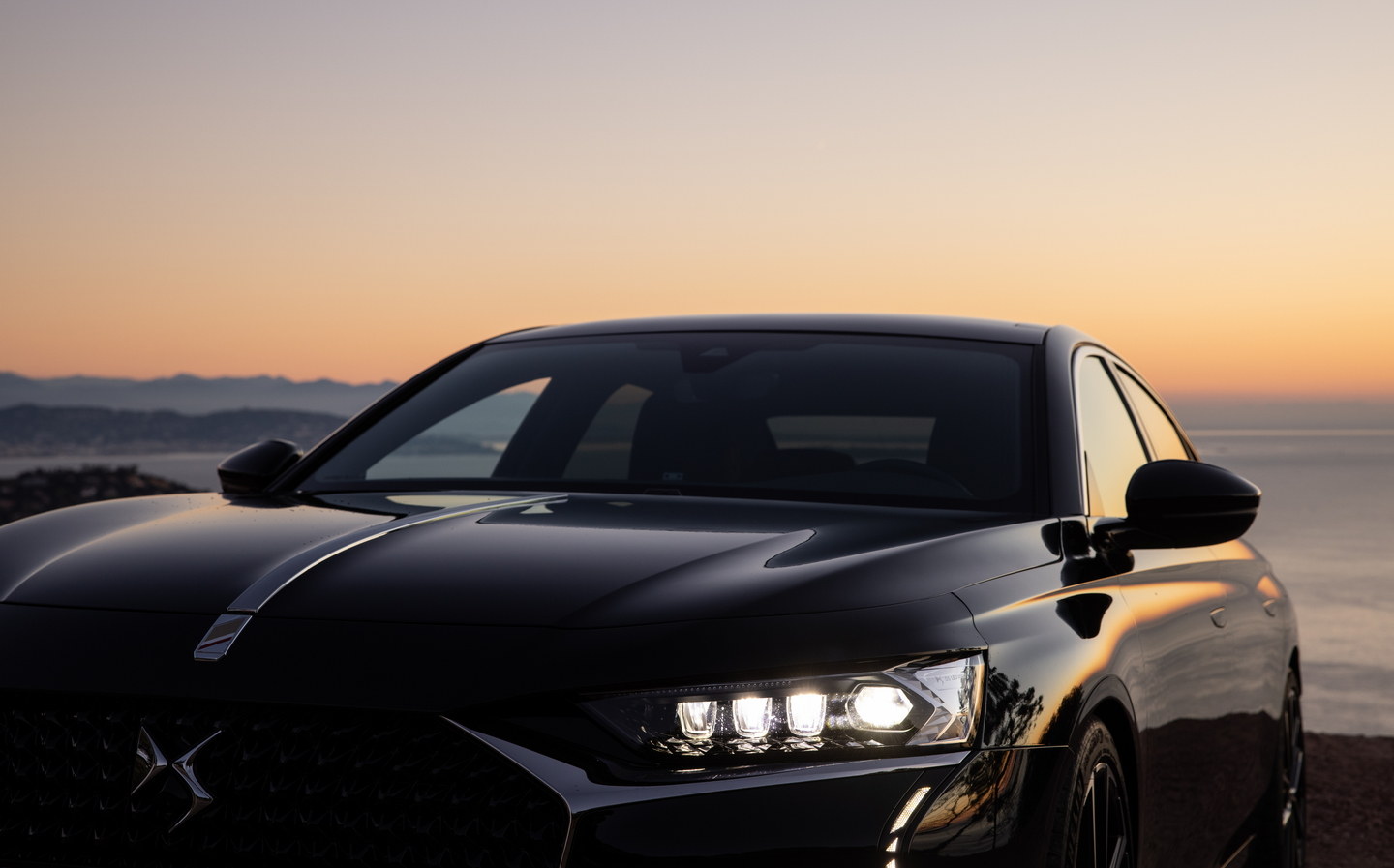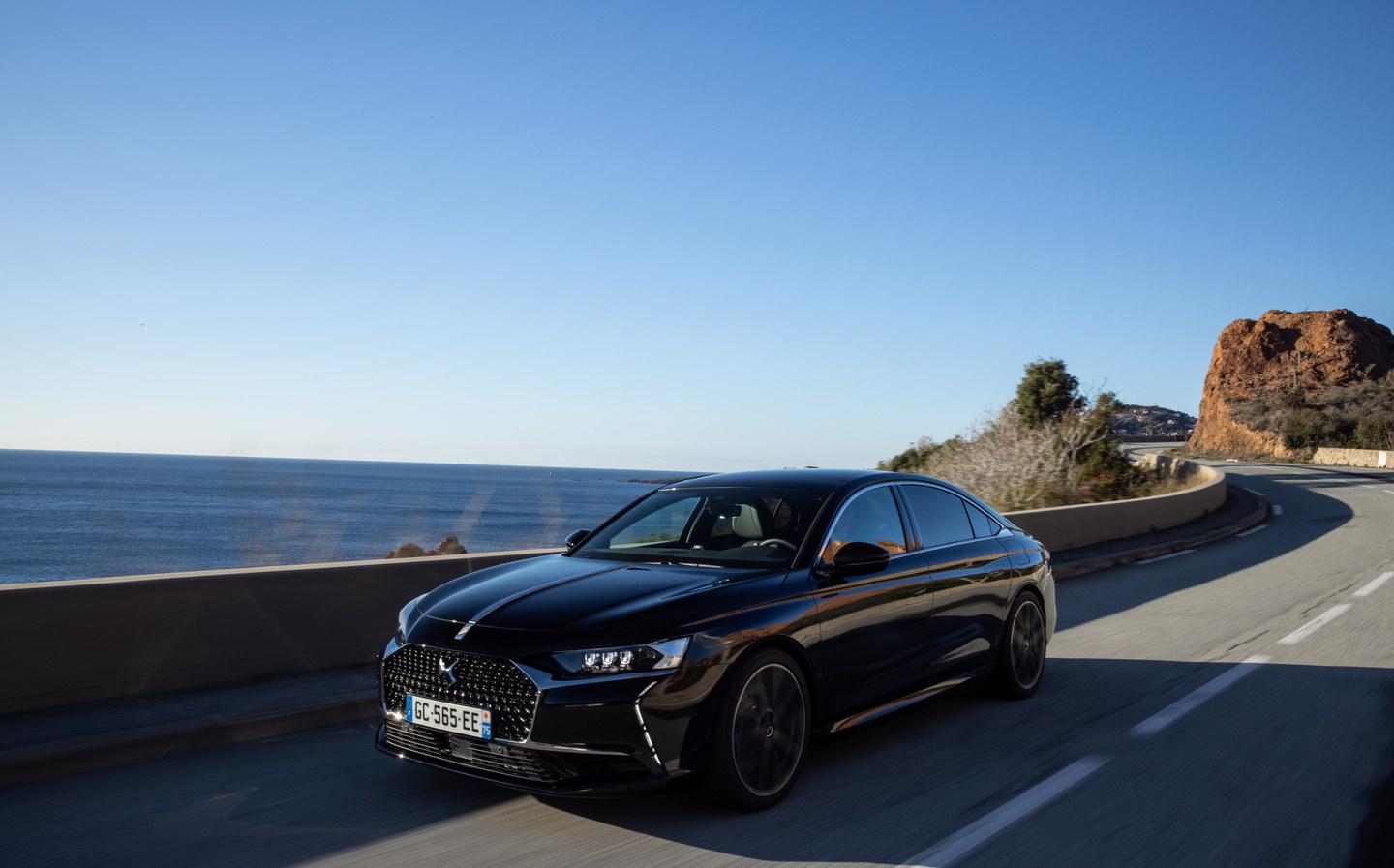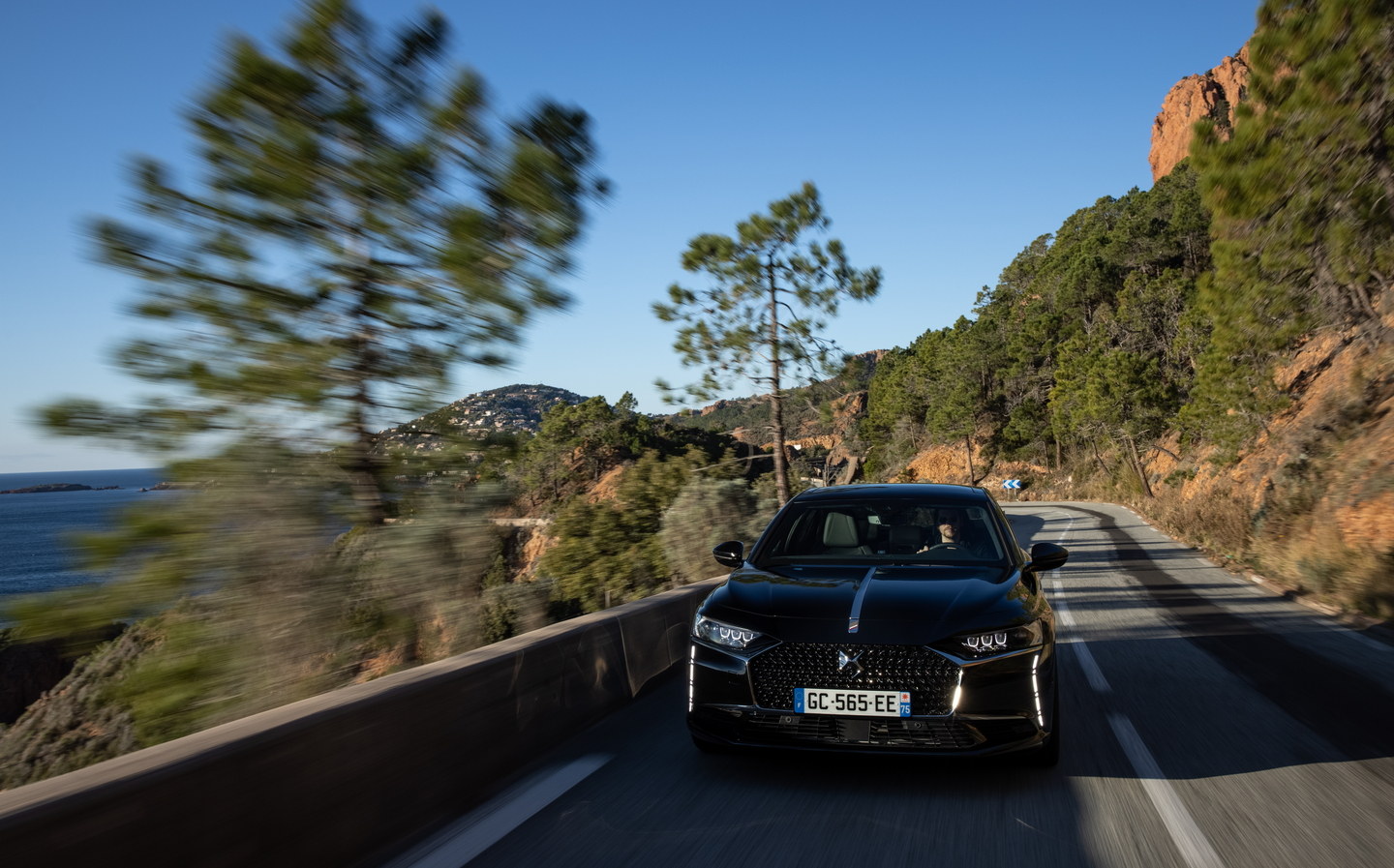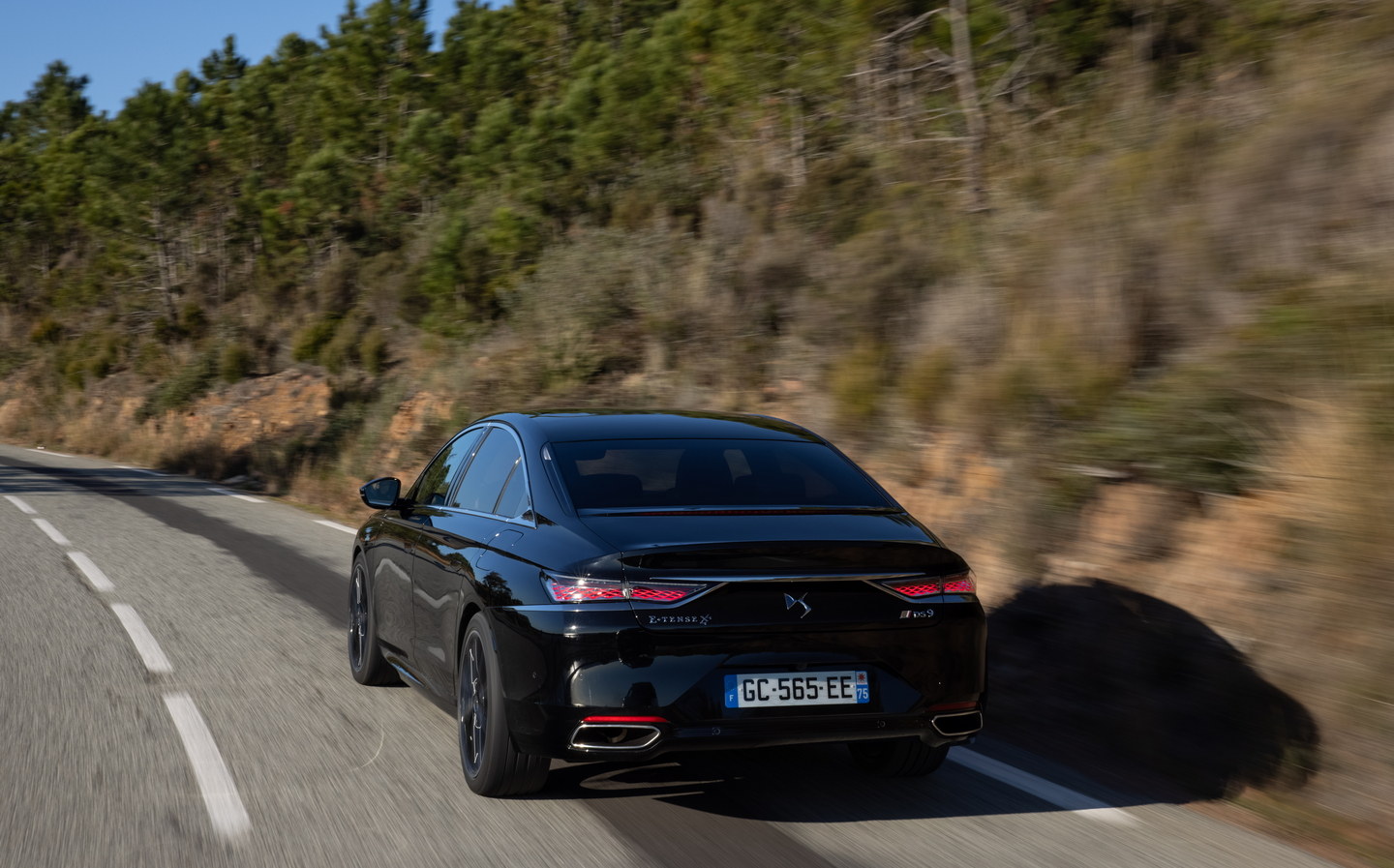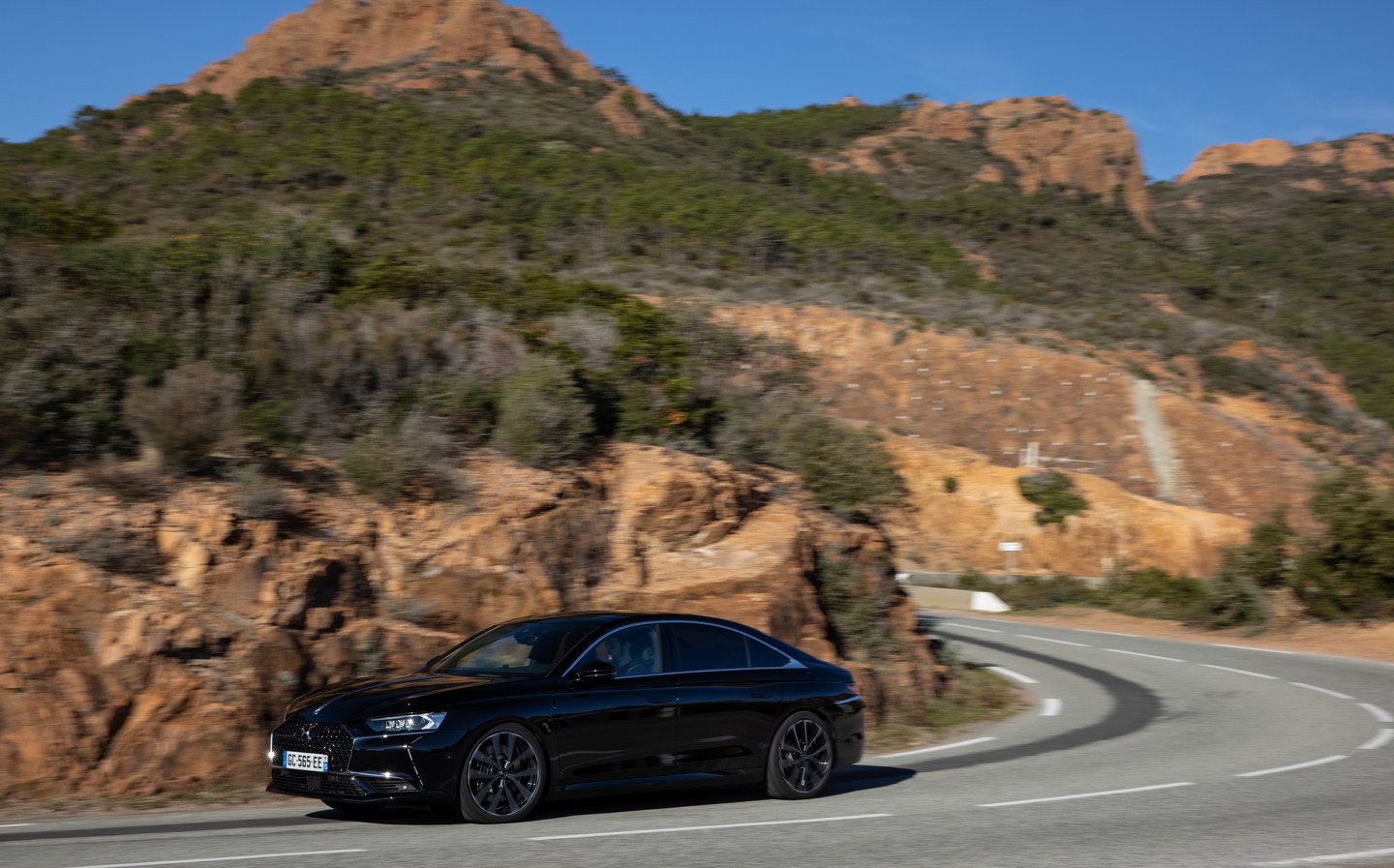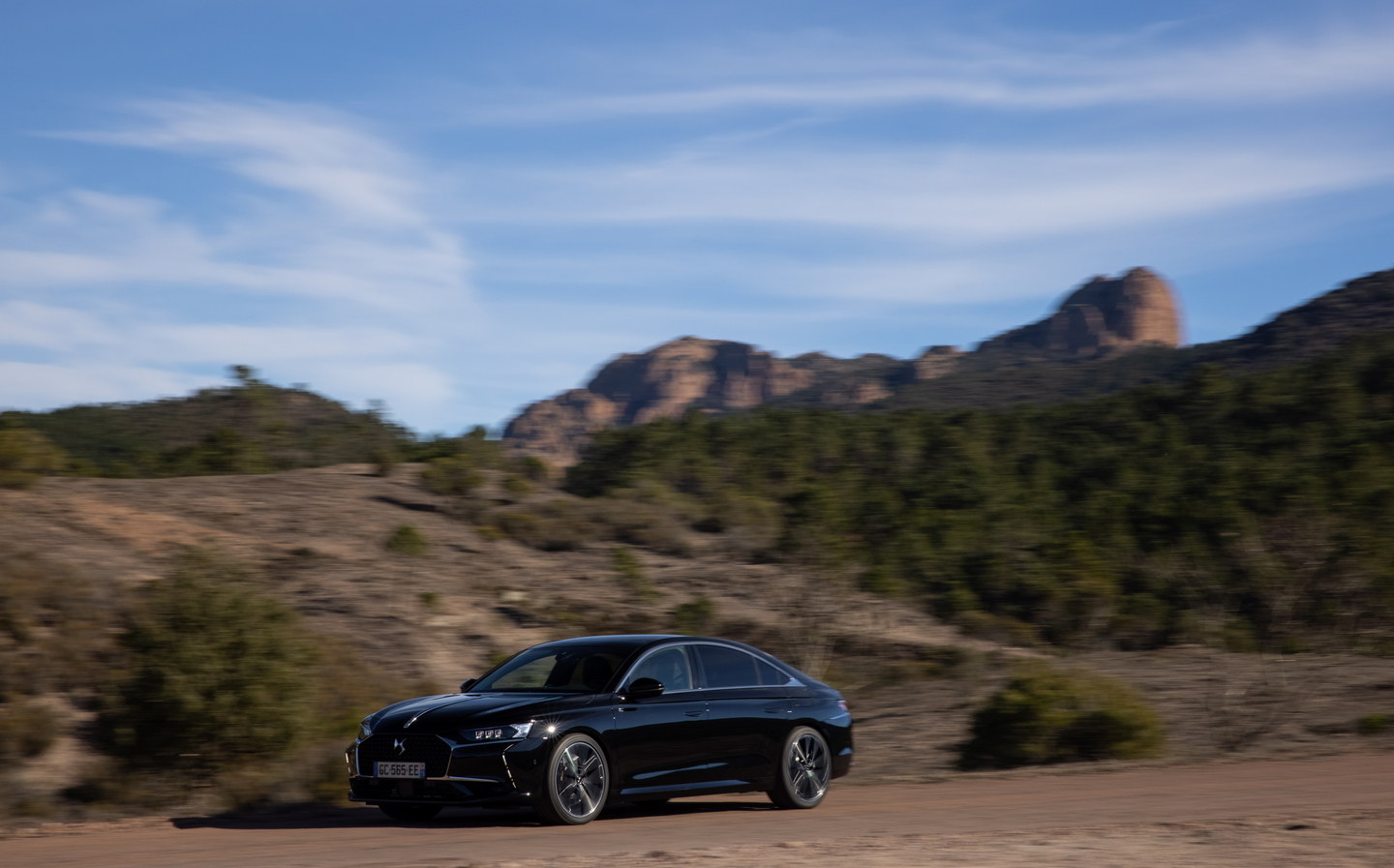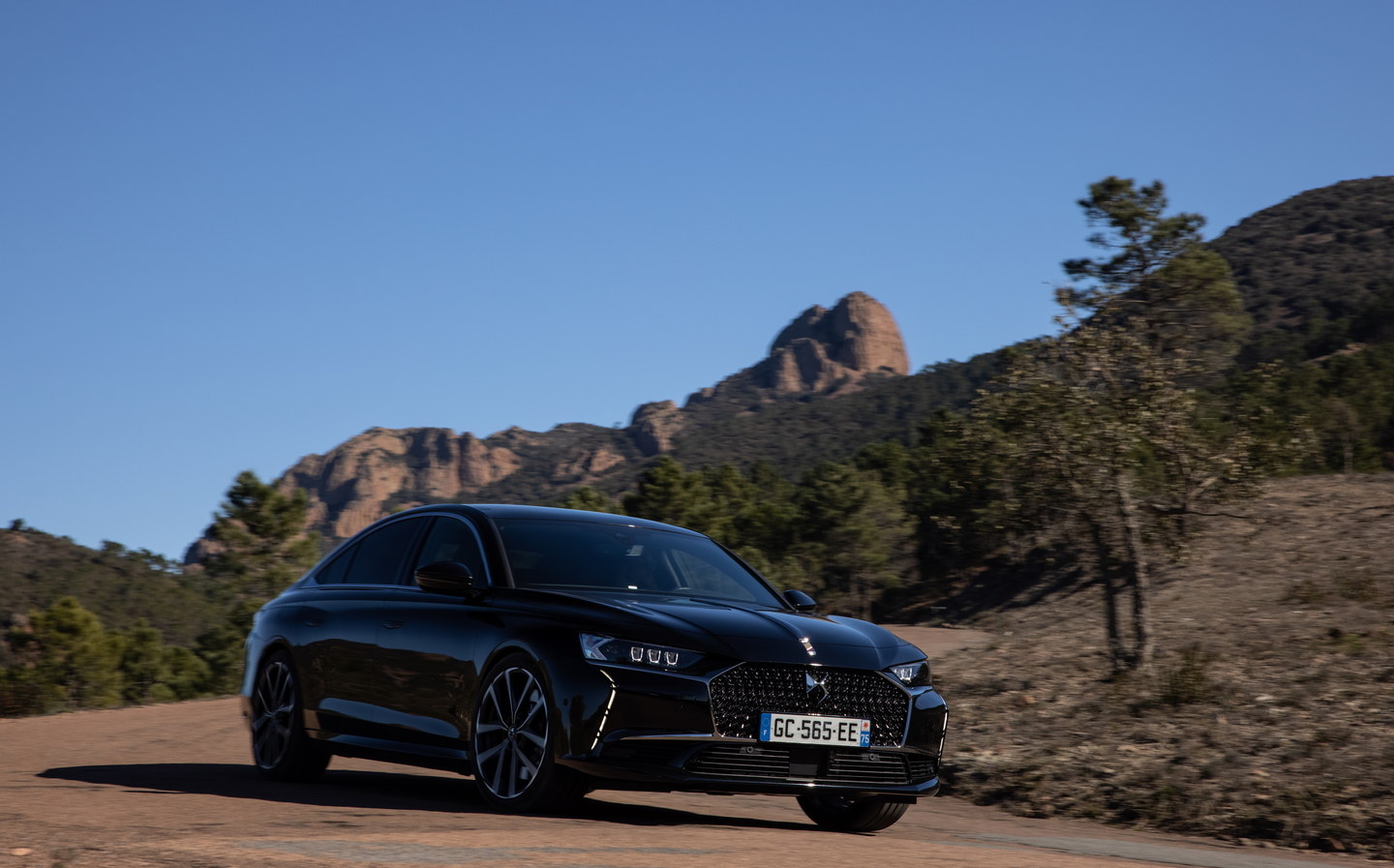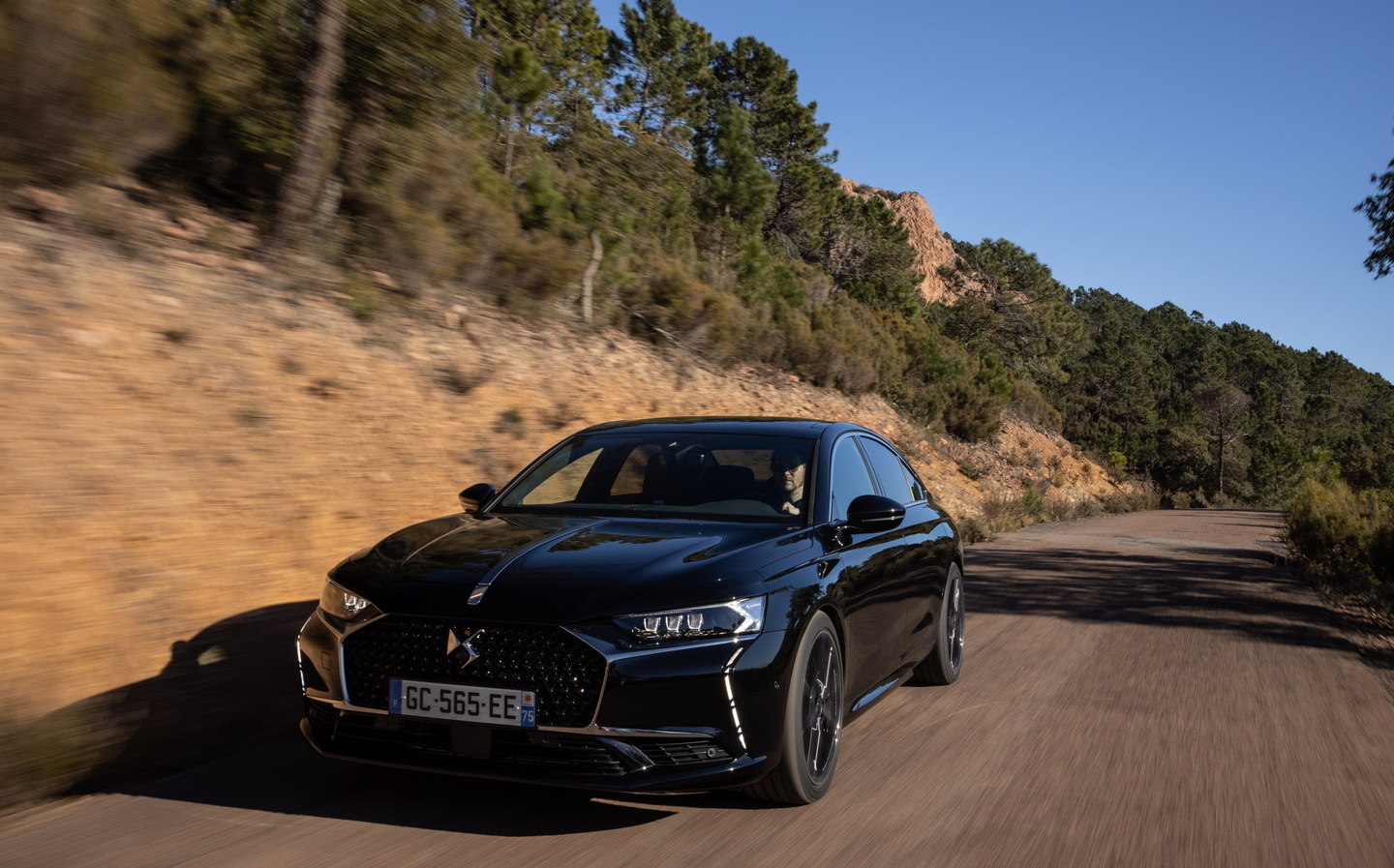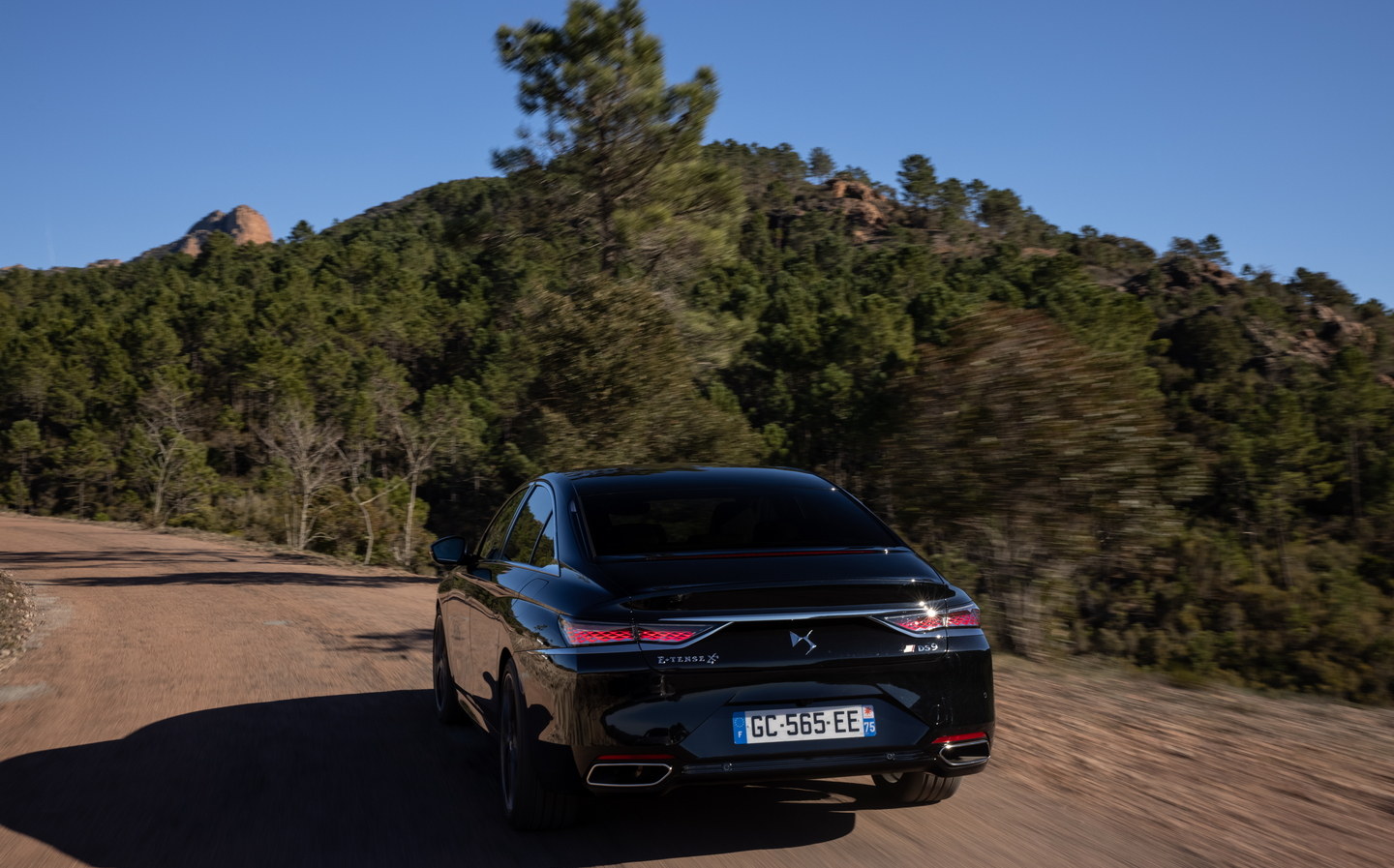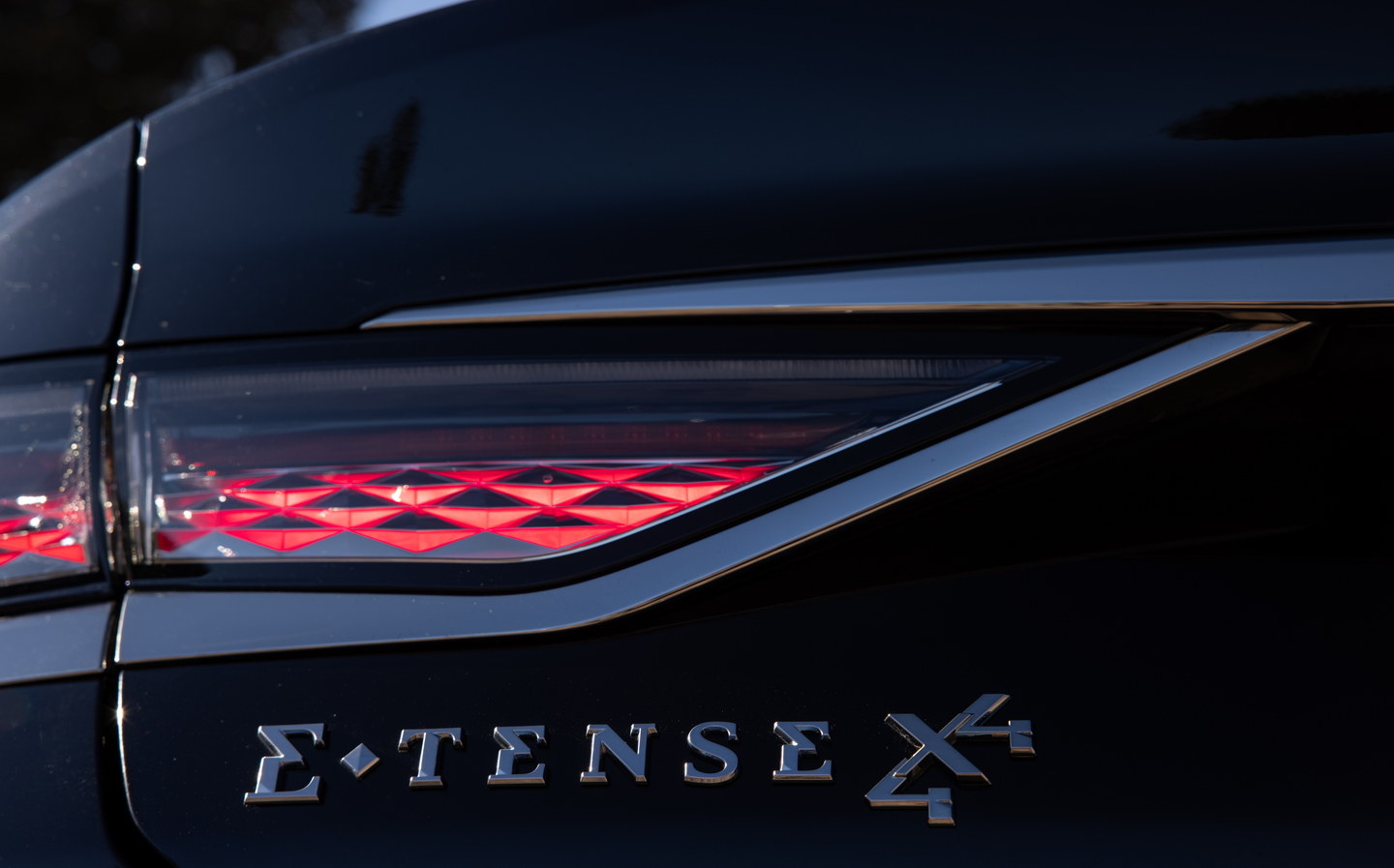DS 9 E-Tense 4x4 360 review 2022: Alternative executive saloon gets a sporty edge
France’s fancy saloon gets faster
The DS 9 is France’s answer to popular executive saloons such as the BMW 5 Series and Mercedes-Benz E-Class, but it doesn’t try to play the Germans at their own game. A comfort-orientated alternative to the Audis, BMWs and Benzes of the world, it’s fighting it out with the likes of the Volvo S90, Jaguar XF, Genesis G80 and Lexus ES as the best premium car for people who’re consciously avoiding the obvious choices.
We tested the DS 9’s premium credentials last year, but now DS — part of the Stellantis group that owns Citroën, Peugeot, Fiat and Vauxhall, among many others — has shaken up the entire range by announcing plans to kill off the PureTech 225 petrol and E-Tense 225 plug-in hybrid versions. Those cars will be replaced with the more powerful E-Tense 250 hybrid and the car tested here, the even more potent E-Tense 4×4 360, which has been fettled by the DS Performance Formula E racing team no less.
Unlike most sports saloons, there’s no emphasis on lap times here. Instead, DS is pitching this range-topping DS 9 as a kind of grand tourer, ideal for arrowing across continents in comfort and style. To that end, DS has undoubtedly created an appealing car, but questions remain as to whether customers will pick the left-field DS over more established luxury brands.
Exterior design and rivals
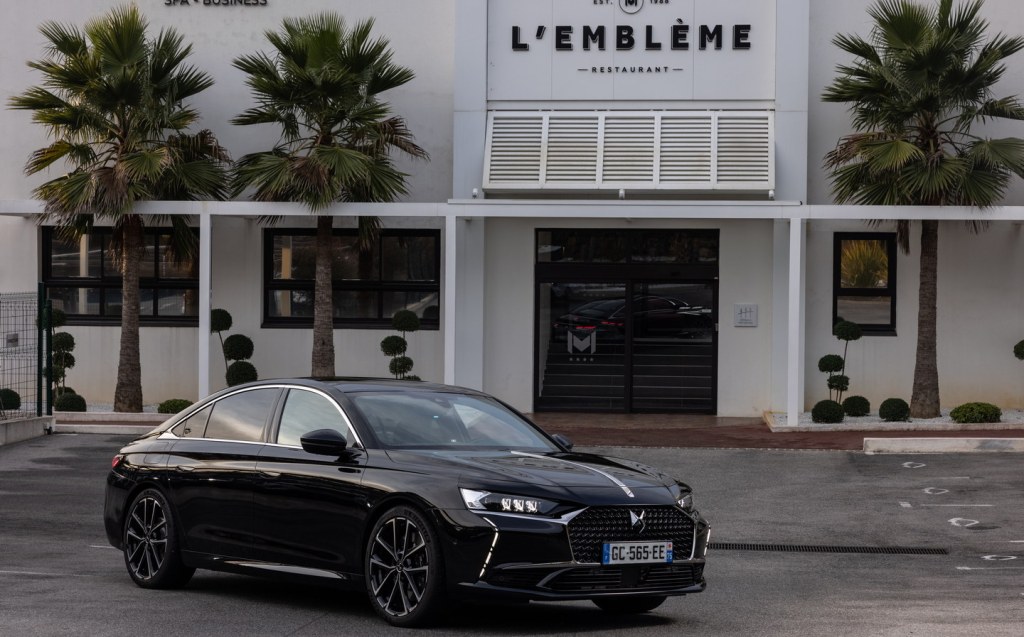
The DS 9 certainly looks the part, with lots of chrome trim adorning a svelte four-door body to give it a really premium image. And that swooping roofline distinguishes it from a good-looking but not particularly exciting collection of rivals. The Mercedes E-Class, Audi A6 and BMW 5 Series, for example, are handsome beasts, but they’re hardly beautiful. The DS, however, is really quite an attractive car.
That’s partly down to the details, including the clever LED headlights and daytime running lamps, as well as the chrome blade down the centre of the bonnet.
Even the rear lights, which are designed to look as though they’re breaking out of the bodywork, are a really neat touch. And because this is the E-Tense plug-in hybrid version, there’s some subtle E-Tense badging dotted around, including a snazzy ‘E-Tense 4×4’ badge on the back, too.
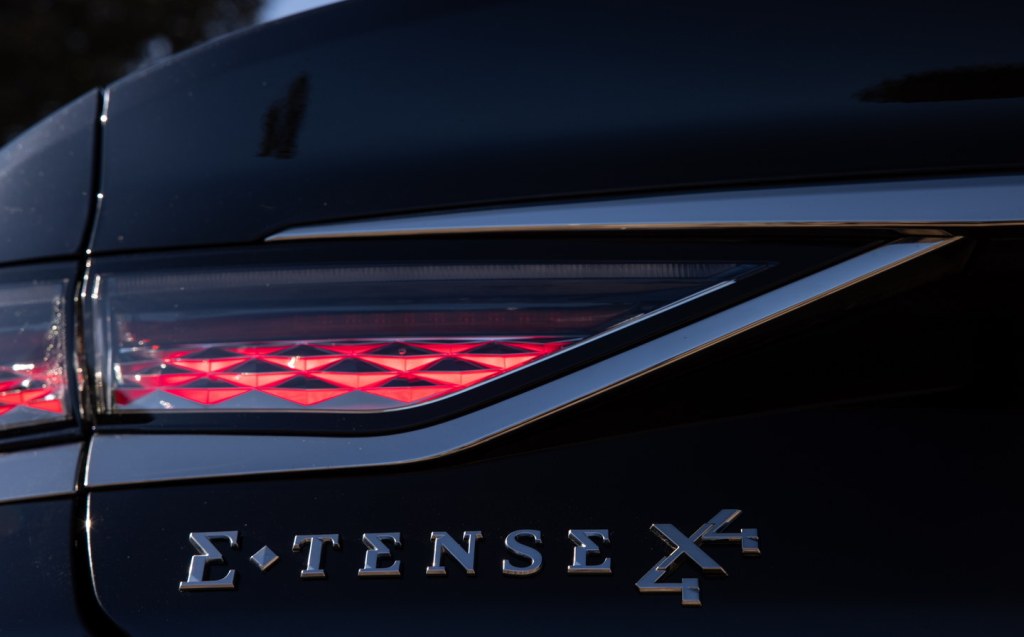
As this is the fastest DS 9 you can buy, there are also more subtle features to watch out for, including the slightly lowered suspension and the slightly wider track (the distance between the wheels left and right wheels). There are big 20in alloys, too, and they hide uprated brake callipers.
While all that remains true no matter which version of the E-Tense 4×4 360 you choose, there are subtle differences between the two trim levels. ‘Basic’ Performance Line+ versions come with DS’s gold-and-red badges, while the more expensive Rivoli+ gets a more upmarket, chrome-orientated image.
Interior and practicality
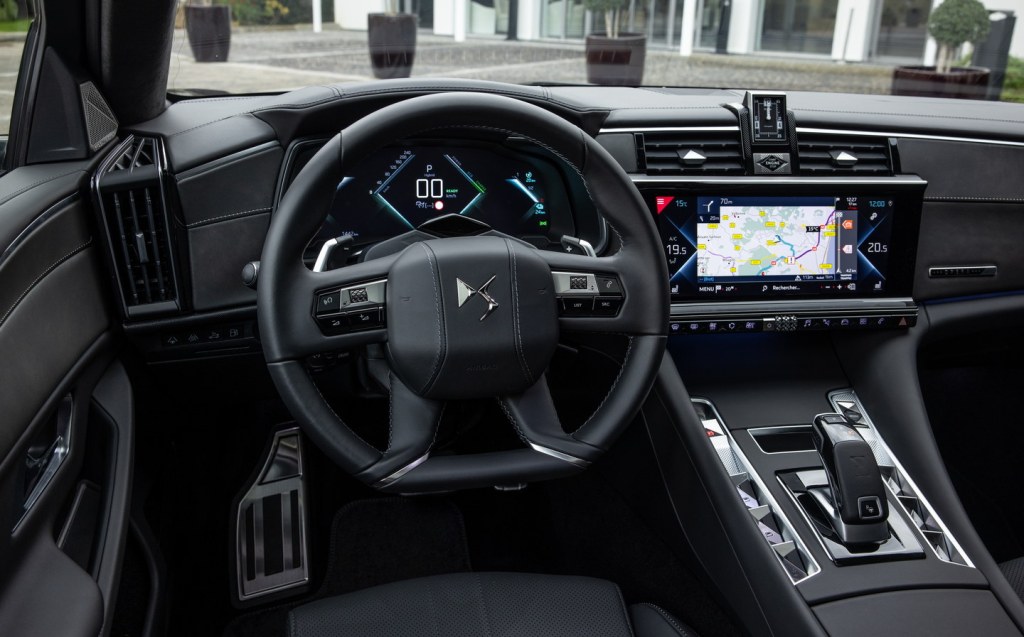
As with the exterior, DS is making a statement of intent with the DS 9’s cabin. The basic design will be familiar to anyone who has driven the DS 7 Crossback, with some high-quality materials and a clean design that has more or less eschewed buttons altogether. The whole dash is dominated by a huge central touchscreen, with just a handful of ‘hotkey’ switches underneath, and there’s a lovely BRM clock that swivels out of the dashboard when you start the car.
Build quality is better than you might expect, with lots of soft-touch materials and some smartly-styled buttons and switches. There are some cheap plastics kicking about if you look hard, but most areas of the interior look high end. All the buttons feel solid and there were no rattles or creaks in the cabin, that we could detect.
The overall ambience is heavily dependent on the trim you choose, with Performance Line+ models getting lots of race-inspired Alcantara upholstery and a sporty perforated leather steering wheel. Opt for the Rivoli+ and there’s a more luxury-centric feel, with more smooth leather upholstery and comfort-orientated touches.
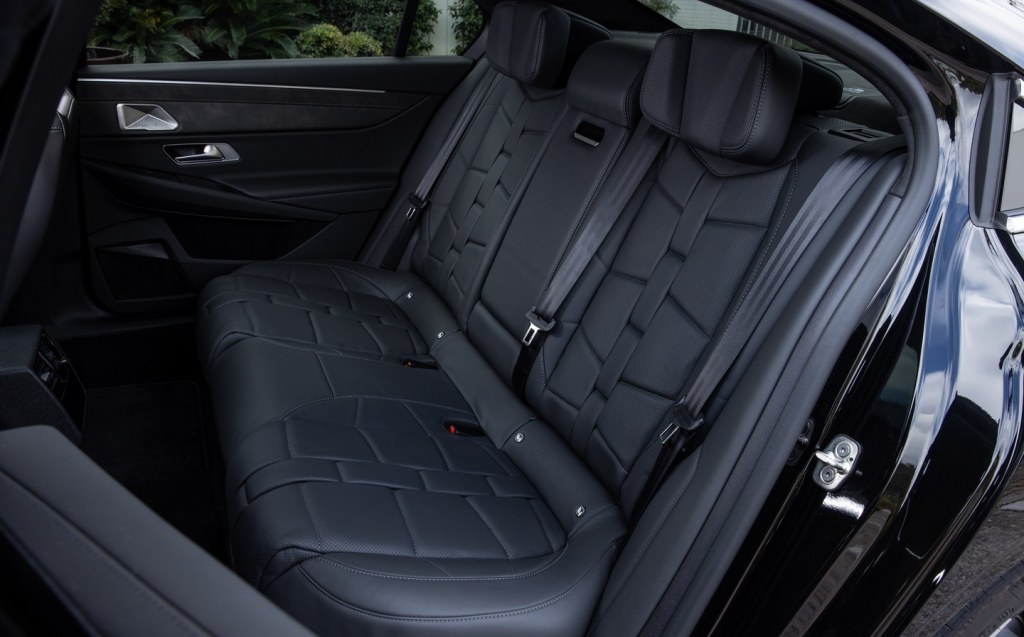
Generally speaking, the Rivoli+ feels comfortable and spacious, with plenty of room in the back for two adults. Headroom and legroom are both adequate, albeit not especially impressive, with enough space for six-footers to sit in relative comfort. So while it isn’t remarkable in any way, it’s more than spacious enough.
In a way, the boot is more impressive. At 515 litres, it’s about the same size as other luggage compartments in the class, but it’s much bigger than other plug-in hybrid models’ boots. It might be shallow, and the opening may not be particularly impressive, but it’s far more capacious than that of an Audi A6 50 TFSI e, for example, which only has 360 litres of boot space.
Technology and safety
Although technology is usually the forte of German brands such as Audi and Mercedes-Benz, DS has done its best to make the DS 9 feel high-tech. Not only is there a massive touchscreen in the middle of the dashboard, but there’s also a huge screen in front of the driver. Neither is as good as the Audi equivalent, but compared with the tech found in a Lexus ES or a Jaguar XF, it isn’t bad at all.
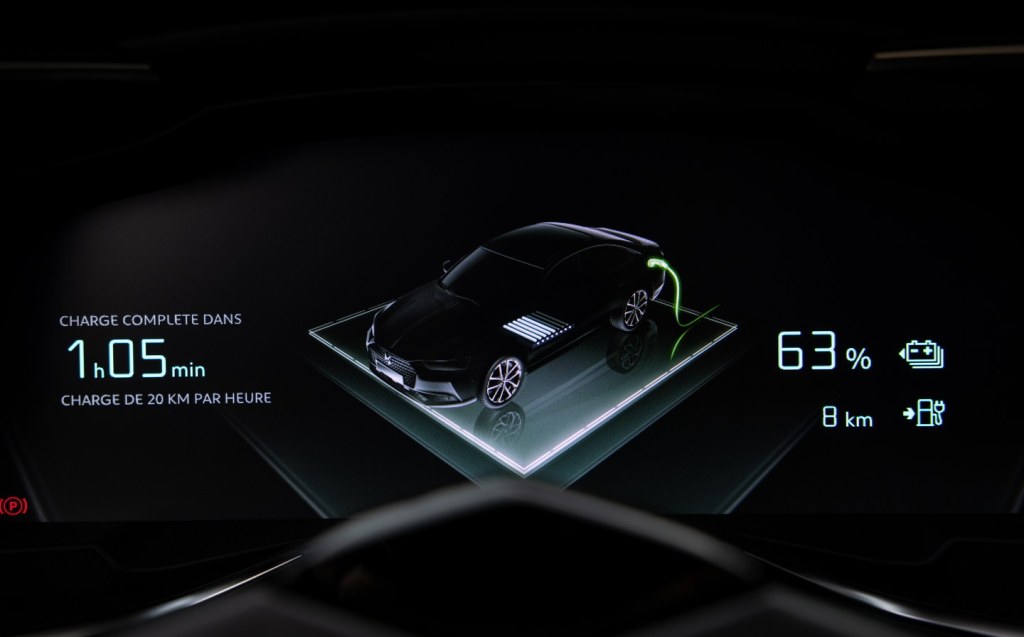
The driver display is particularly good, with lots of configuration options and a clear, easy-to-follow layout. You can choose what you see, and switching between the displays is relatively easy. The only problem is that the switch on the steering wheel is quite easily operated by mistake, which can be irritating.
The central touchscreen, on the other hand, is less impressive. It looks fairly good, as long as you avoid the outdated navigation system that was clearly nicked from a Peugeot, but it can be slow to respond and some of the menus are a bit fiddly and illogical. Muting the navigation instructions, for example, is much more difficult than it should be.
At least there is plenty of safety technology. Blind-spot monitoring is available to tell you when a car is lurking in the hard-to-see areas over your shoulders, and parking sensors are standard across the range. Performance Line+ cars get a reversing camera as standard and the Rivoli+ gets a 360-degree camera, too.
It’s doubtful whether the DS 9 will be crash-tested by Euro NCAP, but we’d expect it to receive a solid five-star rating were tests to be conducted.
Performance, power output and acceleration
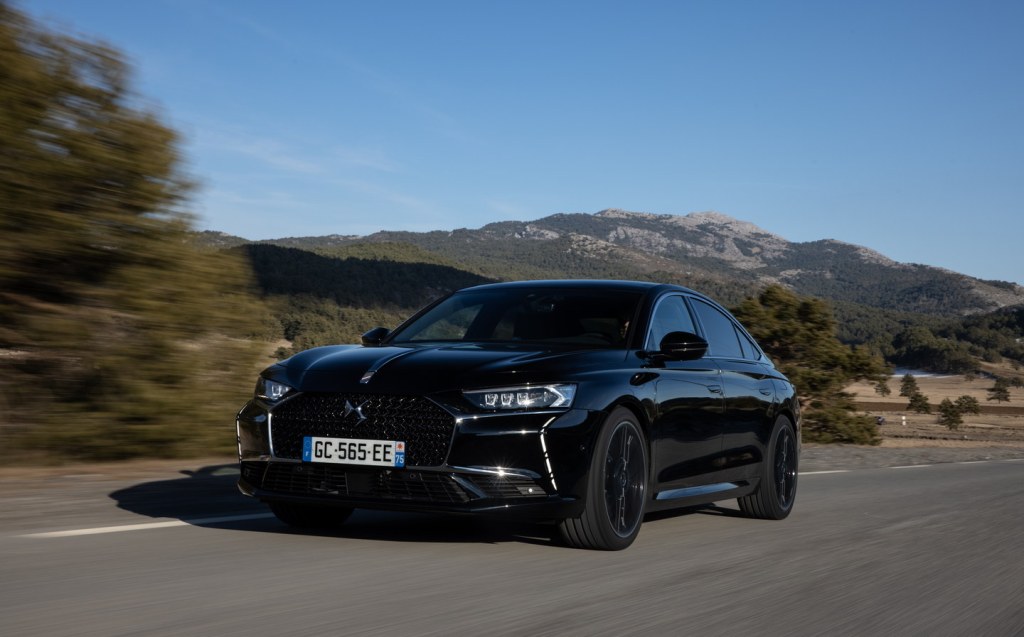
Both the E-Tense 250 and E-Tense 4×4 360 versions of the DS 9 will start life in much the same way. Both house a 197bhp 1.6-litre petrol engine under the bonnet, alongside a 108bhp electric motor and an eight-speed automatic gearbox.
Where the E-Tense 4×4 360 differs is with the addition of a 111bhp electric motor on the rear axle, providing all-wheel drive.
It also uses a slightly smaller battery. Where the E-Tense 250’s lithium-ion battery has a 15.6kWh capacity, the E-Tense 4×4 360 gets just 11.9kWh to play with.
That means this high-powered version will officially manage 33 miles on a single charge. To help improve efficiency, the E-Tense 4×4 360 comes with a driver coaching system that teaches you how to use the regenerative braking in the most effective way. Master the art, and DS says you could add 10% to the battery level every 50 times you brake.
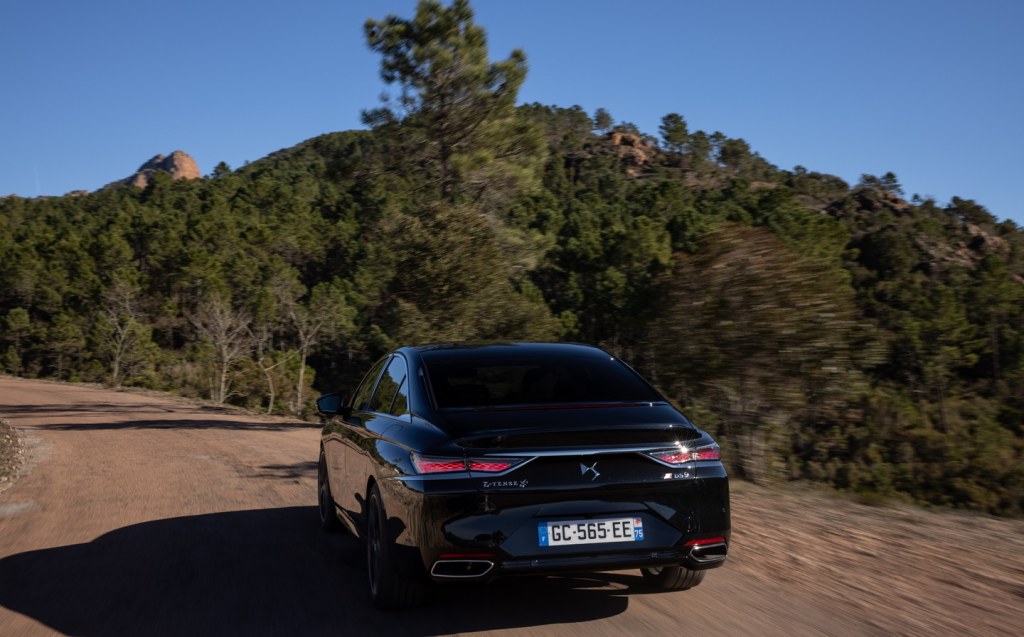
This version of the DS 9 certainly has plenty of stopping power, thanks to the uprated brakes fitted as part of the DS Performance upgrades. They’re tasked with taming a 1.9-ton saloon car that can get from 0-62mph in 5.6 seconds and hit a top speed of 155mph.
But efficiency is the name of the game, and if you can limit yourself mostly to short trips and charge the car regularly, you might be able to cover most of your journeys using electrical power alone, allowing you to get superb fuel economy.
The official figure is 157mpg, but as soon as you start throwing in regular long drives the system will prove quite thirsty, so in the real world that figure is likely to be much lower and will vary from user to user.
At least it’s refined, with the engine only cranking up the volume when pushed hard. The rest of the time it’s impressively subdued, and you barely notice it cutting in across the electric motor.
Ride and handling
DS has admitted the 9 is designed to be comfortable, rather than sporty, and it definitely feels best suited to long motorway slogs.
The suspension feels soft and compliant, thanks in part to the Active Scan technology that monitors the road ahead and tunes the suspension accordingly. It seems to work relatively well, but our test drive on smooth French roads was hardly a challenge for the system.
Even so, it seems the use of Comfort mode comes at the cost of body control, and the car can feel a little slack on less even surfaces. But that’s no problem on the motorway, where the car wafts along imperiously.
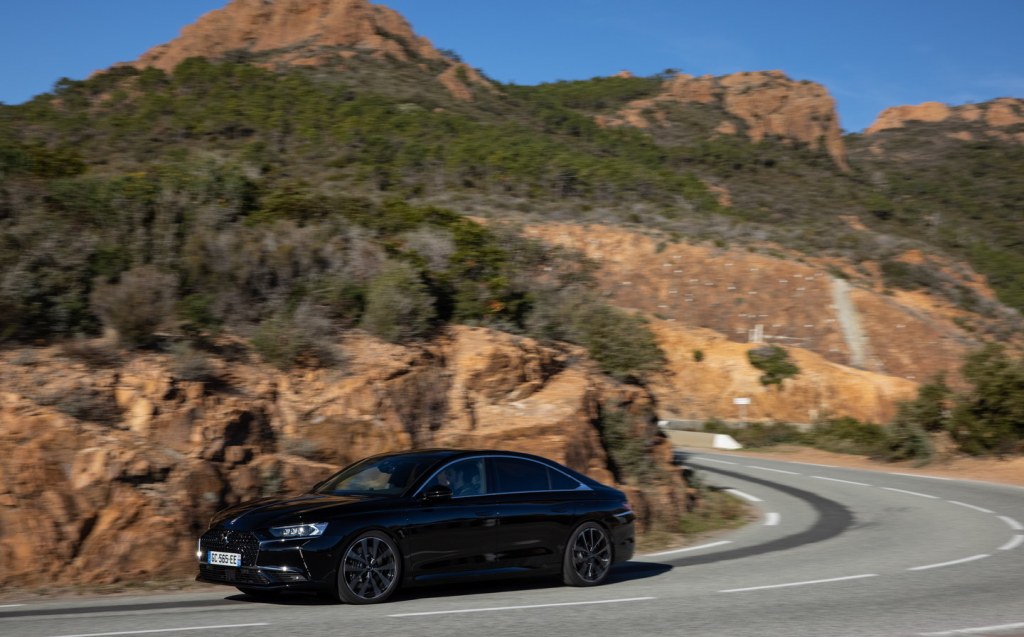
Even so, it’s a surprisingly competent car to drive on good roads. The steering response is a little slow, but it’s smooth and precise, which makes the car quite easy to direct. And although the body does roll in corners, it feels relatively well balanced and there’s plenty of grip. And the all-wheel-drive system means the car can make the most of its power.
Around town, the DS 9 feels quite big but the same can be said of anything else in its class. Visibility is about average, and the small rear quarterlight windows reduce the chances of seeing something in the blind spot, but there’s plenty of glass generally and a good view of the road ahead, despite sitting quite low down.
Among the advantages of the top-end DS 9 is the 4WD mode, which uses the petrol engine and electric motor to provide full-time all-wheel drive. It doesn’t give the DS much off-road capability – and there isn’t much ground clearance to play with anyway – but it is designed to make the car more stable in the rain and snow. It won’t make much difference to most customers, but some will value the extra security.
Pricing and on-sale date
The E-Tense 4×4 360 models are already available to order, with prices starting at a hefty £54,100. That pays for the Performance Line+, while the more luxurious Rivoli+ costs an even more substantial £57,200. The less powerful E-Tense 250, meanwhile, will arrive soon with a price of £47,100 for the Performance Line+ and rises to £50,200 for the Rivoli+.
Eventually, those two cars will become the sole options, with the cheaper PureTech 225 petrol and E-Tense 225 hybrid models phased out. It leaves the DS 9 looking expensive alongside its rivals, but most of those cars come with petrol or diesel engines as standard. On a like-for-like basis, it’s more competitive.

Verdict: DS 9 E-Tense 4×4 360 review
The DS 9 undoubtedly has its charms, and this E-Tense 4×4 360 version’s mix of performance, ride and handling is certainly appealing. But for the majority of customers, the E-Tense 250 will prove the more sensible option, offering greater electric range and adequate performance.
Yet all of that is probably academic, because while the DS 9 feels refreshingly different to the options from Volvo and Lexus that usually do battle with the German elite, it seems destined to remain a niche product. Even DS admits sales figures are likely to be in the hundreds, rather than the thousands. And that’s a shame because there’s much to like about the big, soft French saloon.
Tweet to @JFossdyke Follow @JFossdyke
Related articles
- After reading this review of the 2022 DS 9 saloon, you might be interested in what we had to say about the Jaguar XE
- Also check out what we said about the new Audi Q4 e-tron
- You may be interested in our extended test of the Range Rover Sport PHEV
Latest articles
- Aston Martin Valkyrie AMR-LMH hypercar hits track ahead of 2025 Le Mans challenge
- Porsche has begun testing the electric Cayenne
- Cupra Leon 272 eHybrid 2024 review: Bigger battery, better tech … but is it a Cupra?
- Porsche 911 GTS 2024 review: Hybrid heresy or more Stuttgart genius?
- Extended test: 2023 Vauxhall Astra Sports Tourer GS PHEV


